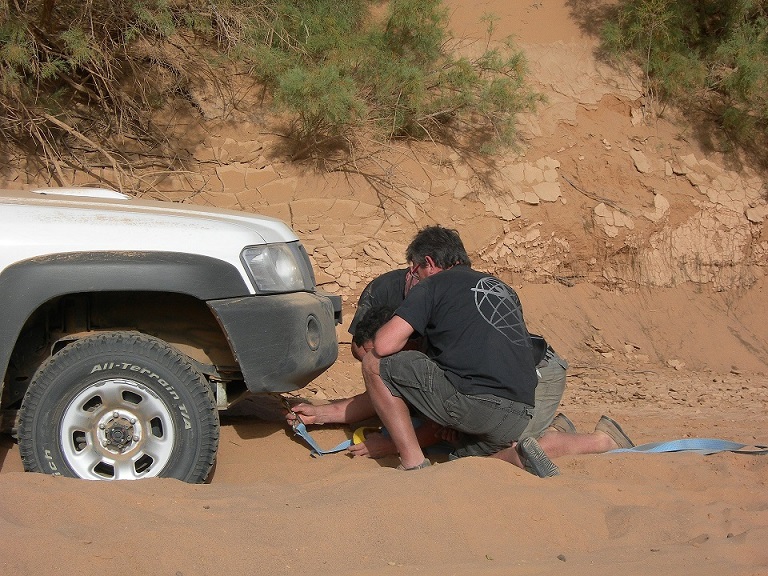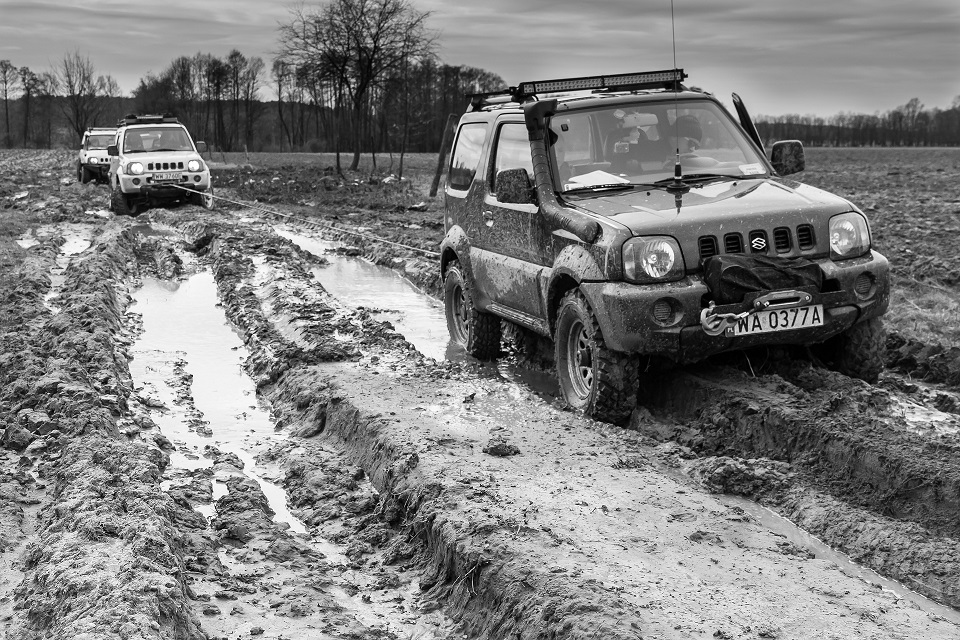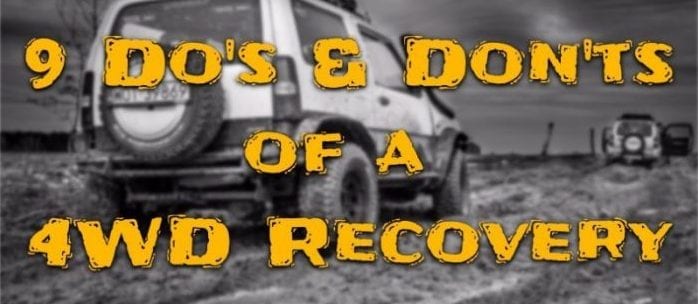Getting out and about in your 4WD can be great fun but eventually, there will be a time when you get yourself into a sticky situation. A successful 4WD recovery takes the right equipment and know-how to get everybody out quickly and without incident. We have put together this list of tips to get you and your vehicle back on track safely.
1. DON’T rush into it
Recovering a 4WD is a stressful situation. For the sake of safety, it is important that you take a moment to assess the situation carefully and decide on the safest and easiest option for recovery. Before jumping into your recovery, check all your equipment thoroughly and inspect the stuck vehicle carefully to make sure there are no avoidable surprises during recovery. Taking the time to set up your recovery correctly will not only ensure the safety of those involved, it will also reduce the risk of breaking any equipment during the 4WD recovery.
2. DO use only rated recovery points
Very few 4WDs come straight from the factory with rated recovery points. At a glance, your car may look like it has points suitable for recovering, but in most cases, these are only tie down points. Tie down points are designed to be used while transporting a vehicle, not for recovering. Take a good look at your points, if they aren’t made from thick metal and robustly secured with strong mounts, they shouldn’t be used for recovering. If you are still unsure what your points are, check the owner’s manual, it will usually tell you what’s what on your vehicle.
We strongly suggest that you take the time to learn the difference between a rated recovery point and a tie down point. This article is a great place to start.
3. DON’T skip the prep work
It might not be the easiest job, but taking a few minutes to dig around the wheels of a stuck 4WD dramatically reduces the amount of strain put on your recovery gear. Make sure you dig out space in front of all 4 wheels to give the vehicle the best chance at popping back to the surface.
4. DO have the right equipment
Having the right gear can make your 4WD recovery a walk in the park. Having the wrong gear could ruin your trip completely. Make sure any equipment you use during a recovery is stamped or tagged with a rating. This includes shackles, straps, trunk protectors, winches, hooks, snatch blocks and anything else you plan to use. When it comes to safe recovering, if it’s not rated, don’t risk it!
Make sure the gear you have is also suited to your vehicle. For example, a Suzuki Jimny is going to need different gear to a 4-tonne Ford Ranger. Once you have the right gear, educate yourself on how to use your equipment in a range of situations. Check out this 4WD recovery handbook for some helpful tips.
5. DON’T ignore your tyre pressures
Tyre pressures are the easiest way to make a quick, safe recovery in sand. Before attempting any sort of recovery, it is important to check that the 4WD is running on the correct tyre pressures. Letting a little extra air out of the tyres can make a huge difference during a recovery, so be sure to double check. Check out our other tips for beach/sand driving here.

6. DO use your equipment correctly
One of the biggest mistakes people make during a recovery is to use the equipment incorrectly. Recovering a vehicle can be dangerous so it is vital to understand how to use your equipment correctly so your 4WD, and everyone in the area stays safe. There are a few common mistakes that many rookies make:
- The biggest mistake to highlight is using a tow ball when recovering. Tow balls are not designed to withstand the stress of a snatch strap or winch. When put under the stress of a recovery, tow balls are likely to snap off and turn into a potentially deadly missile.
- Another mistake is to join straps together with a shackle. In many situations, you might not be able to get close enough to recover the vehicle using just one strap. This means you will need to join two straps together. Joining two straps with a shackle is an accident waiting to happen. If one of the straps snaps, you end up with a potentially deadly chunk of metal flying through the air. Check out this guide for the correct way to join two straps together for a safe 4WD recovery.
- The last common mistake with recovery gear is adding more equipment than is needed. Unnecessary shackles mean more potential missiles, so do away with what is not needed and keep the recovery as clean and safe as possible.
7. DON’T recover in reverse
Recovering in reverse won’t do your 4WD any favours. Your 4WD’s gearbox isn’t as powerful in reverse as is it in 1st or 2nd gear. Where possible, to avoid unnecessary strain on your gearbox, turn your vehicle around and recover going forwards

8. DO speak up in dangerous situations
If you see someone attempting a dodgy recovery it is worth speaking up about it. Safety is paramount during a 4WD recovery but unfortunately, not everyone thinks of ‘safety first’ in these heightened situations. One little oversight could mean the difference between a safe recovery, a damaged 4WD or worst case, an injured bystander. It may not be the easiest thing to do, but it might avoid a potentially dangerous situation. Speak up if something doesn’t seem right.
9. DON’T go full speed
Too often the first instinct during recovery is to take off full pelt when snatching another vehicle out of a sticky situation. Not only does this put an immense amount of pressure on the vehicle, you also increase the chances of damaging your gear in the process. Start off slow and progress to a quicker speed if you don’t recover the vehicle on the first attempt. As a general guide, start out with 1-2 metres of slack in the strap and take off with the stuck vehicle slowing spinning its wheels.
When you are the one stuck, the biggest mistake you can make is planting your foot on the accelerator. If your wheels are turning but you aren’t going forward, you will sink. The longer you accelerate, the deeper you go. During recovery, do the prep work, don’t get a lead foot, gently turn the wheels and with a bit of luck, you should pop right out.
There are of course a heap more things to consider when recovering, but the experience doesn’t have to be an ordeal. With the right equipment, a bit of education and a good deal of common sense you will be able to safely get yourself, and your 4WD buddies, out of any sticky situation you come across.

